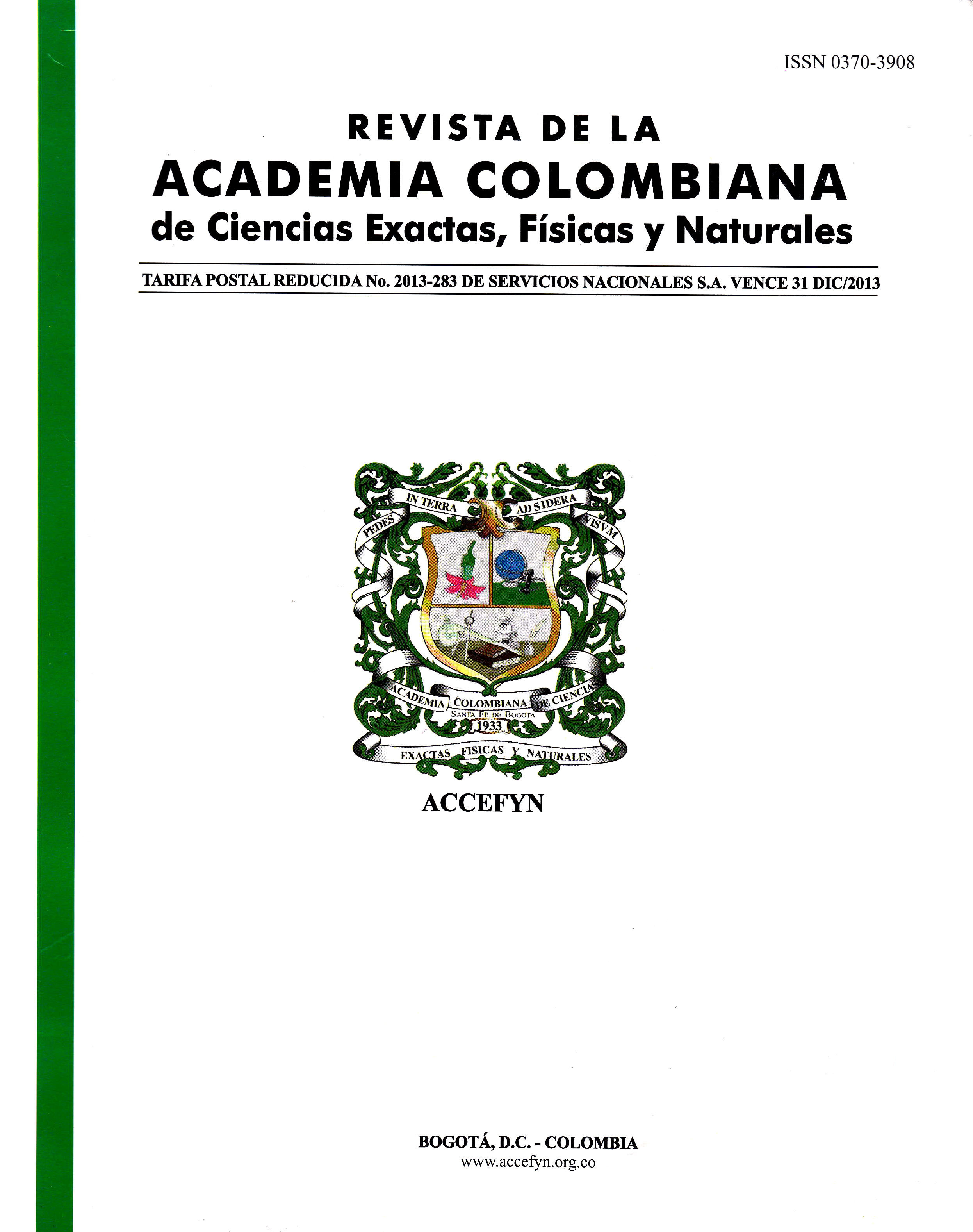Abstract
In this work we evaluated the aquatic pH tolerance of embryos and tadpoles of four anuran Colombian species under laboratory conditions. According to the LC50 values, E. pustulosus was the most sensitive species to acid and basic pH while R. granulosa was the most tolerant to acid and R. marina to basic pH. H. crepitans had an intermediate pH tolerance. We did not find a significant difference in the pH tolerance between embryos and tadpoles but they were always more tolerant to hydrochloric acid and sodium hydroxide than acetic acid and ammonium hydroxide, respectively.
References
Battarbee, R. W. 1991. Acid-rain and acid waters. Nature 350:285- 285.
Blaustein, A. R. & Wake, D. B. 1990. Declining amphibian populations: A global phenomenon. Trends in Ecology and Evolution 5:203-204.
Brady, L. D. & Griffiths, R. A. 1995. Effects of pH and aluminium on the growth and feeding behaviour of smooth and palmate newt larvae. Ecotoxicology 4:299-306.
Dunson, W. A. & Connell, J. 1982. Specific inhibition of hatching in amphibian embryos at low pH. Journal of Herpetology 16:314-316.
Duellman, W. E. & Trueb, L. 1994. Biology of Amphibians. Johns Hopkins University Press. Baltimore.
Freda, J. 1986. The influence of acidic pond water on Amphibians - A Review. Water Air and Soil Pollution 30:439-450.
Freda, J. 1991. Long-term monitoring of amphibian populations with respect to the effects of acid deposition. Water, Air and Soil pollution 55:445-462.
Freda, J. & Dunson, W.A. 1984. Sodium balance of amphibian larvae exposed to low environmental pH. Physiological Zoology 57:435-443.
Frisbie, M. P. & Wyman, R. L. 1992. The effect of environmental pH on sodium balance in the red-spotted newt, Notophthalmus viridescens. Archives of Environmental Contamination and Toxicology 23:64-68.
Fominykh, A. S. 2008. An Experimental Study on the Effect of Alkaline Water pH on the Dynamics of Amphibian Larval Development. Russian Journal of Ecology 39:145-147.
Grant, K. & Licht L. 1993. Acid tolerance of anuran embryos and larvae from Central Ontario. Journal of Herpetology 27:1-6.
Green L. & J. E. Peloquin. 2008. Acute toxicity of acidity in larvae and adults of four stream salamander species (Plethodontidae). Environmental Toxicology and Chemistry 27:2361-2367.
Gosner, K. L. 1960. A simplified table for staging anuran embryos and larvae with notes on identification. Herpetologica 16:183-190.
Lehtinen R. & Skinner, A. 2006. The enigmatic decline of Blanchard’s Cricket Frog (Acris crepitans Blanchardi): A test of the habitat acidification hypothesis. Copeia pp. 159-167.
Pierce, B. A. 1985. Acid tolerance in Amphibians. Bioscience 35:239-243.
Rasanen, K., Laurila A. & Merila, J. 2003. Geographic variation in acid stress tolerance of the moor frog, Rana arvalis. II. Adaptive maternal effects. Evolution 57:363-371.
Stuart, S. N., Chanson, J. S., Cox, N. A., Young, B. E., Rodriguez, A. S. L. , Fischman, D. L. & Walter, R. W. 2004. Status and trends of amphibian declines and extinctions worldwide. Science 306:1783-1786.
Wake, D. B. & Vredenburg, V. T. 2008. Are we in midst of the sixth mass extinction?. A view from the world of amphibians. Proceedings of the National Academy of Sciences 105:11466-11473.
Young, B. E., Stuart, S.N. , Chanson, J. S., Cox, N. A. & Boucher, T. M. 2004. Disappearing Jewels. The status of new world amphibians. Arlington, V.A: Natureserve.
Wells, K. D. 2007. The Ecology and Behavior of Amphibians. The University of Chicago Press. Chicago.
Zar, J. H. 1996. Biostatistical Analysis, 3rd edition. Prentice Hall. New Jersey.

This work is licensed under a Creative Commons Attribution-NonCommercial-NoDerivatives 4.0 International License.
Copyright (c) 2023 https://creativecommons.org/licenses/by-nc-nd/4.0





